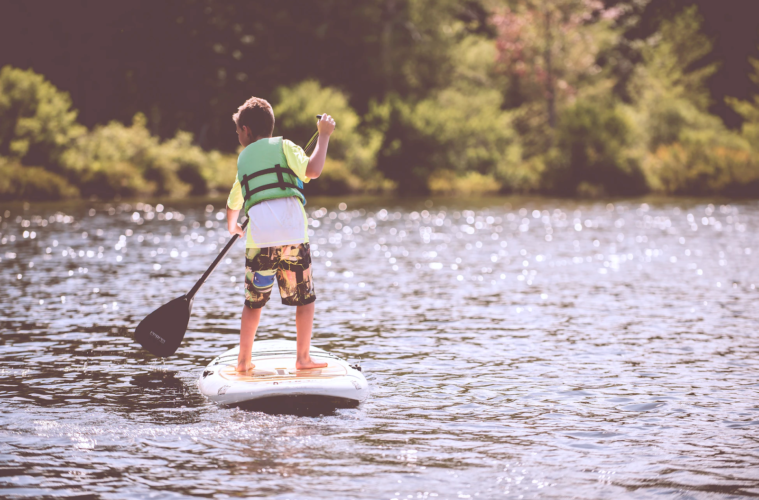Paddle Boarding has become a popular pastime in the last decade, and for a good reason. This activity offers the benefits of a great workout with the leisure and scenery of a relaxing afternoon on the lake. Beyond this, the activity has ample room for kids and pets to participate, making it ideal for a family-based Saturday.
Of course, like any sport or water-based pastime, paddle boarding can quickly go awry if you’re not careful. The following will explore some of the things that you can do to help keep yourself, your children, and your pets safe during a day of paddleboarding.
Give Little Ones Time to Get Used to It
Kids are designed to be open and exploratory. Of course, that doesn’t mean they’re going to feel immediately comfortable on a paddleboard. Before taking your board out for a full day, give the children some time to get used to it in shallow water when you have nowhere to go.
Because you need children to stay relatively balanced on the board as you’re paddling, you’ll want to make sure they’re comfortable with the device so that they can focus on keeping themselves in the middle of the board. Paddleboard aficionados at www.standuppaddleboardsreview.com mention that it’s also a good idea to lift the pressure off your child when they’re learning. Instead of treating the activity like boot camp, designed to keep them fit and healthy, keep in mind that the event is supposed to be fun.
Make Sure Kids Know How to Swim
When paddleboarding, you’re surrounded by water. You’re also expected to fall in from time to time, especially as you’re learning. This means kids need to be comfortable with the idea of falling in the water and getting back up on the board. Before embarking on a paddleboard journey, make sure you’ve taken the time to get your child’s swimming skills up to snuff. This is a valuable and potentially life-saving skill whether or not your kid ever steps on a paddleboard.
Get Proper Fitting Life Jackets
Even though you and your child are able to swim, should you fall in, you might find yourselves quite far from shore and tired. More than that, accidents can happen that result in you hitting the water pretty hard. A life jacket will help mitigate the risk of drowning or injury. It also might be legally required depending on where you are paddleboarding. A significant element of proper life jacket use is making sure that the device fits well. A life jacket that a kid can slip out of isn’t going to be offering the same level of protection as one that fits properly.
The Right Tools
Of course, to take a kid paddle boarding safely, you need a paddleboard. You also need a paddle and a leash. You might want to take a moment and read some online reviews about the options available that are easiest for children to handle. There are also boards specifically designed to hold more weight—this way, you and your child can share a paddleboard.
Be Aware of the Weather
Windy days make for choppy water. Choppy water makes for more difficult paddle boarding. You also don’t want to be stuck far away from shore when a storm strikes. Lightning is extremely dangerous when you’re in the water. You’ll also want to ensure that your child has appropriate sun protection if it’s a hot day. This could mean a thin long-sleeved shirt, a hat, sunglasses, and sunscreen. The sun will reflect off of the water and feel amplified—resulting in much faster burning than if you were on shore.
Stay Hydrated
It can get hot out on the water, even if you’re not planning on being out for very long. Make sure that you bring ample water for you and your child to help prevent dehydration or heat stroke. This cannot be emphasized enough because the feeling of dehydration can come later, but that does not mean you should not be hydrating constantly.
Consider Snacks for Longer Trips
If you’re planning on being out on the water for quite a while, it’s a good idea to bring some snacks with you. Paddleboarding takes a lot of physical energy, which means you’ll get hungry a lot faster than if you were hanging out back at the cottage.
The above tips should help you secure a safe and happy paddleboarding session for the whole family. It’s important that you understand where you’re paddleboarding to—plan your route and bring a map if you need it to keep yourself from getting lost. Someone should always be told where you’re going.


